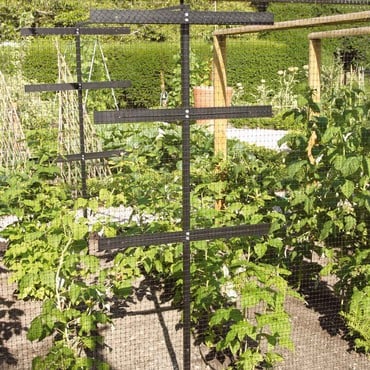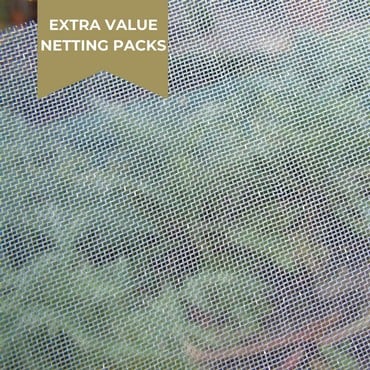The innovative Raspberry Beetle Trap, which doubles as a monitoring kit, to detect the early signs of raspberry beetle by placing it 1m above ground, 4-6 weeks before first flower during April to July. The Raspberry Beetle Trap helps to improve the timing and efficiency of spray treatment, thereby reducing crop damage or any unnecessary spray application.
Attracted by the incorporated attractant lure and colour of the cross vanes (simulating a giant raspberry flower), the beetles fly into the cross vane, fall into the funnel-shaped catchment area and down into the holding bucket below. If you discover 5-10 beetles per trap per week in the period from beetle emergence until onset of first flowering then we would suggest using a suitable Insect Killer Spray. The attractant lure in the Raspberry Beetle Trap lasts 6 weeks, the length of a normal raspberry season.
- Raspberry Beetle Trap supplied as trap only (GPC-126)
- Lures are available to buy separately (GPC-127)
- Raspberry Beetle Trap detects the early warning signs of raspberry beetle
- Helps improve the timing and efficiency of spray treatment
- Helps reduce crop damage and unnecessary spray application
- Beetles are attracted to the lure and colour
- Attractant lure lasts approx 6 weeks
- Apply an Insect Killer Spray if numbers of trapped beetles indicates a problem
Product Reviews
This product is absolutely brilliant! Last year we lost about half of the raspberry crop to raspberry beetle infestation so decided to try this trap. It was very easy and quick to assemble and literally hundreds of beetles were caught in the first weeks after hanging it up on the cane support structure. Pyrethrum spray was used as advised and a new lure inserted to prolong the protection of the autumn fruiting raspberries. This year the harvest have been virtually pest free and the blackberries and hybrid berries are all looking good too. Will definitely be using the trap in the future - highly recommended.
So far the trap is proving itself a great success. I watched yesterday as the beetles flew to the trap and fell through the mesh. I am hoping for a maggot free crop this year.
Last year I suffered really badly with the grubs so persuaded my father to buy this trap as one of my Christmas presents. Putting it together wasn't easy as you have to fit a mesh and this is tight, but I got there in the end. I put it up and caught at least 50 beetles, maybe more. You put water and washing up liquid in the bottom and I hung it off my fence by my raspberries. So very easy to use, and the beetles were lured by a Pheromone inplant and flew into the trap. The crop as a result has been wonderful this year. So far I have had one grub.

Using the Raspberry Beetle Trap
The new innovative Raspberry beetle trap is designed to catch and trap Raspberry beetle adults. The design is based on a funnel trap commonly used in commercial horticulture and agriculture. The white vanes on the trap mimic raspberry flowers. The beetles are attracted by the special raspberry beetle attractant lure and fly into the white vanes and fall into the funnel trap below. Suspend the trap 1 metre from the ground near or amongst the Raspberry plants. Fill the trap with a small amount of water and empty the trap contents about once a week. If you see the trap has caught 5-10 beetles per week you should consider a curative spray programme against the remaining raspberry beetles. Make sure you use a spray safe to use on edible plants. Insect Killer spray containing Pyrethrum is our recommended product for this treatment. The attractant lures in the trap last six weeks, so make sure you replace every six weeks and keep the trap active from April –August.
Appearance and Lifecycle
Raspberry beetle (Byturus tomentosus) adults lay their eggs on raspberry flowers from May to mid-August. These develop into white larvae about 8mm long. The adult Raspberry beetles are small and light brown. In the late summer the fully developed larvae fall into the soil and overwinter as pupae.
Symptoms and Damage
The damage raspberry beetle causes can be significant to cane fruit. The adults feed on flowers and larvae on the developing fruit. Berries become blemished and little grey-white grubs are often found inside raspberries when they are harvested. The damage caused can also let fungi attack the fruit.
Natural Choice Treatments
A combination of natural choice products can be used to treat this damaging pest. The first step is to monitor and catch the adult raspberry beetles with the new Raspberry Beetle Trap. Any survivors can be killed with the pyrethrum-based insect killer spray.


























